What Is The Price Of Battery Cage System For Layers?
Introduction
When it comes to commercial egg production, The battery cage system's effectiveness and compact design have led to its widespread adoption. Despite being debatable, this system is nevertheless widely used in the sector. We will examine the battery cage system, its benefits, and drawbacks, and offer a cost estimate for setting one up for layers in this article.
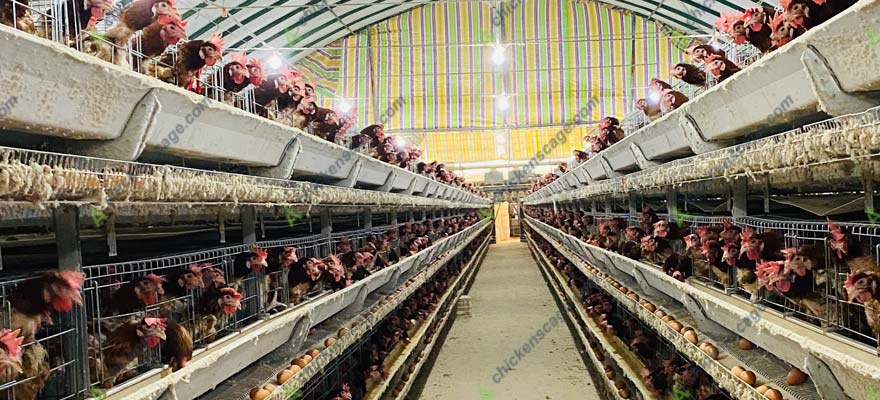
Understanding the battery cage system
In the battery cage system, layers (hens reared for egg production) are housed in stacked cages that are made to make the most of available space. This kind of intensive farming makes it possible to house more birds in a relatively small space, which increases egg output. Farmers may harvest eggs more easily and effectively because the cages frequently have feeding, watering, and egg-collection mechanisms.
Composition of battery cage system
Battery cages are often constructed from durable materials like galvanized steel or premium plastic. Each layer is housed in a little space provided by these cages, preventing them from moving around the facility at will.
Wire mesh flooring: A wire mesh floor is typically used to build cage bottoms. This design enables trash to be managed more easily and ensures cleaner eggs by allowing droppings to pass through. Due to the possibility of the chickens suffering foot damage, the wire flooring has drawn criticism.
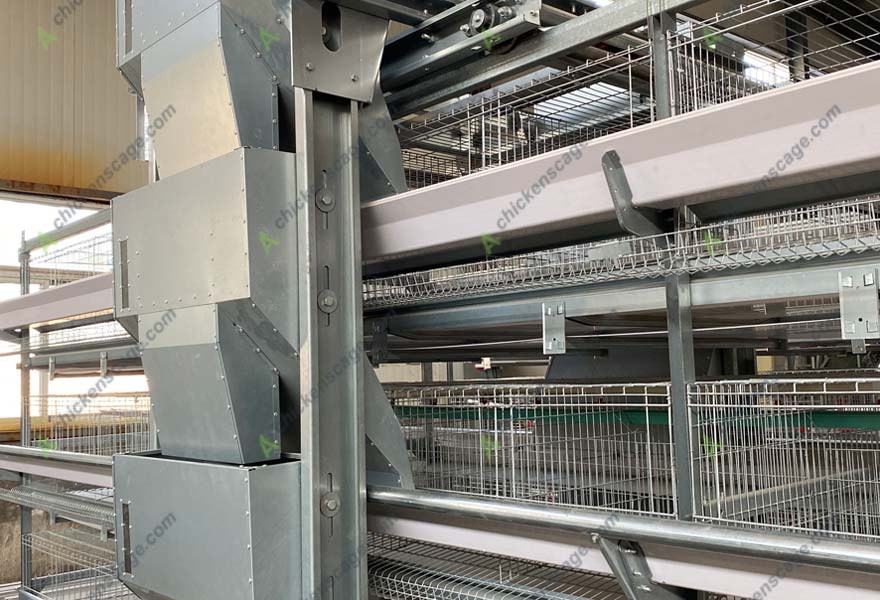
System for Feeding: Battery cages come with an automated feeding system. A conveyor system immediately supplies feed to each cage from feed troughs outside the cage, assuring a steady supply of food.
Watering System: The battery cage system also includes an automated watering system. Installed inside the cage are nibble drinkers or cups that give the layers a constant supply of clean water.
Structure of Battery Cage System
Vertical Stacking: Battery cages are stacked vertically in numerous tiers to make the most of the available vertical space. This layout makes it possible to house more layers in a smaller space, which makes it a practical option for large-scale egg production.
Aisles and Walkways: The battery cage system is made to make it simple for farm staff to perform daily activities including cleaning, collecting eggs, and feeding livestock. Movement and maintenance tasks are made easier by the aisles that separate the cage rows.
Manure Collection System: A manure collection system is in place beneath the cages. Droppings and garbage are gathered on trays or belts and pass through the wire mesh floor before being disposed of or recycled as fertilizer.
Ventilation: Proper ventilation is crucial to maintain a healthy environment for the layers. The battery cage system is equipped with fans and vents to ensure adequate air circulation and temperature control.
Auxiliary Equipment in the Battery Cage System
Egg Collection Belts: These automated belts run beneath the cages, gently collecting eggs from each cage and transporting them to a central collection point. This system minimizes egg damage and reduces labor for manual egg gathering.
Lighting System: Artificial lighting is often used to control the laying cycle of the birds. By adjusting the duration of light exposure, farmers can stimulate or slow down egg production as needed.

Waste Management System: The collected manure is either removed from the facility regularly or used as organic fertilizer. Some farms invest in composting systems to recycle waste and reduce environmental impact.
Environmental Controls: Some battery cage systems incorporate advanced environmental controls, including temperature and humidity monitoring, to ensure optimal conditions for the layers.
Advantages of the battery cage system
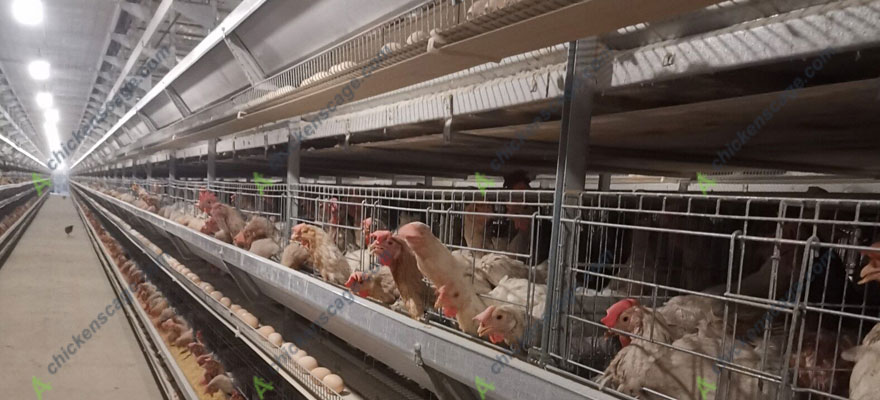
High Egg Production
The battery cages' controlled environment makes sure that layers have the best lighting and nutrients, which results in increased egg-laying rates.
Space Efficiency
Farmers can house more birds in a smaller space because of the vertical stacking of cages, which saves important floor space.
Better Disease Control
Compared to free-range or other housing systems, individual cages for birds help to prevent the transmission of diseases.
Egg Damage is Reduced
Because battery cages protect eggs from contamination and damage, the eggs produced are of superior quality.
Disadvantages of the Battery Cage System
Animal welfare concerns
According to critics, putting birds in tiny cages prevents them from exhibiting their natural behaviors, which causes stress and decreased well-being.
Health Risks
Crowding can make the birds more stressed and aggressive, which could result in injury and pecking problems.
Costly Infrastructure
A battery cage system's initial setup costs might be high, which may put off small-scale farmers.
Price estimation for a battery cage system
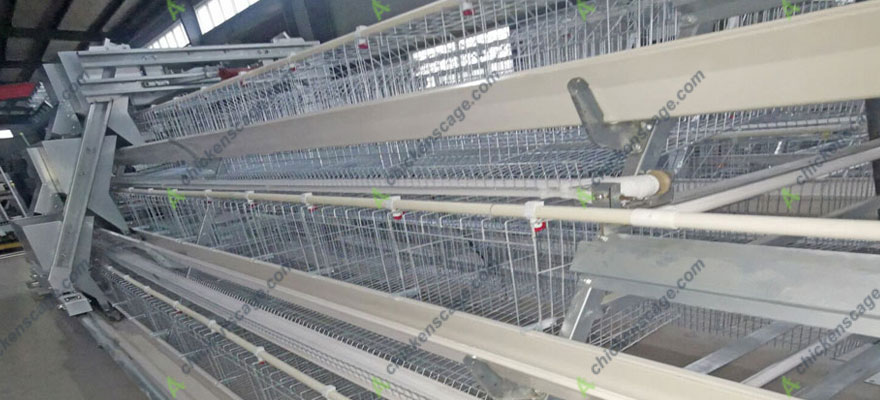
The cost of establishing a battery cage system for layers can vary based on several factors, such as the size of the operation, cage quality, and additional features. As of 2023, here is a rough estimation for a mid-sized layer farm with 1,000 birds:
Cage Units: The cost of the cages themselves can range from $100 to $150 per unit, depending on the material and design. For a 1,000-bird farm, you may need approximately 50 units, resulting in a cost of around $5,000 to $7,500.
Infrastructure and Housing: Building a structure to house the cages and provide essential facilities like water and electricity can add another $15,000 to $25,000 to the total investment.
Feeding and Watering Systems: Expect to spend around $1,000 to $1,500 for efficient feeding and watering systems.
Miscellaneous Expenses: Including insulation, egg-collection belts, and other accessories, the total miscellaneous costs could be approximately $2,000 to $3,000.
Keep in mind that these are rough estimates and that prices can vary significantly based on location, cage quality, and prevailing market conditions. Additionally, ongoing expenses like feed, veterinary care, and labor costs should be factored into the budget.
Conclusion
The battery cage system remains a widely used method for commercial egg production due to its efficiency and space-saving design. While it offers advantages like higher egg production and disease control, it also raises concerns about animal welfare. For those considering setting up a battery cage system, the initial investment can be substantial, but potential returns may outweigh the costs.
As the poultry industry continues to evolve, farmers are encouraged to explore alternative housing systems that prioritize both animal welfare and productivity. Ultimately, the decision to adopt a battery cage system or opt for alternative methods should be made after careful consideration of the specific needs and values of the farm and its operators.

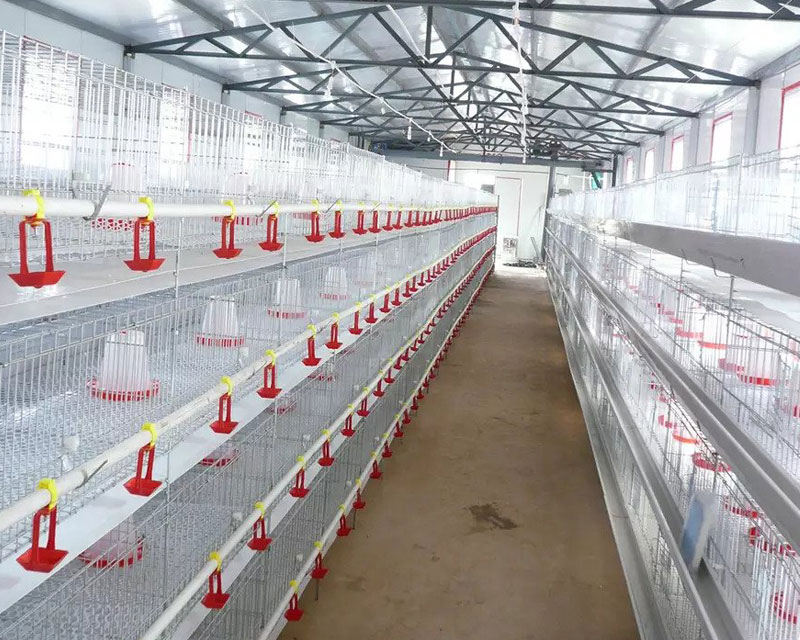 4 Tier H Type Broiler Cage Project In South Africa
4 Tier H Type Broiler Cage Project In South Africa Layer Cage Project In Cuba
Layer Cage Project In Cuba H Type Layer Cage Project In Southeast Asia
H Type Layer Cage Project In Southeast Asia A Type Layer Cage Installed In West Africa
A Type Layer Cage Installed In West Africa Nigeria H Type Layer Cage Project
Nigeria H Type Layer Cage Project H Type Layer Cage Installed In Togo
H Type Layer Cage Installed In Togo